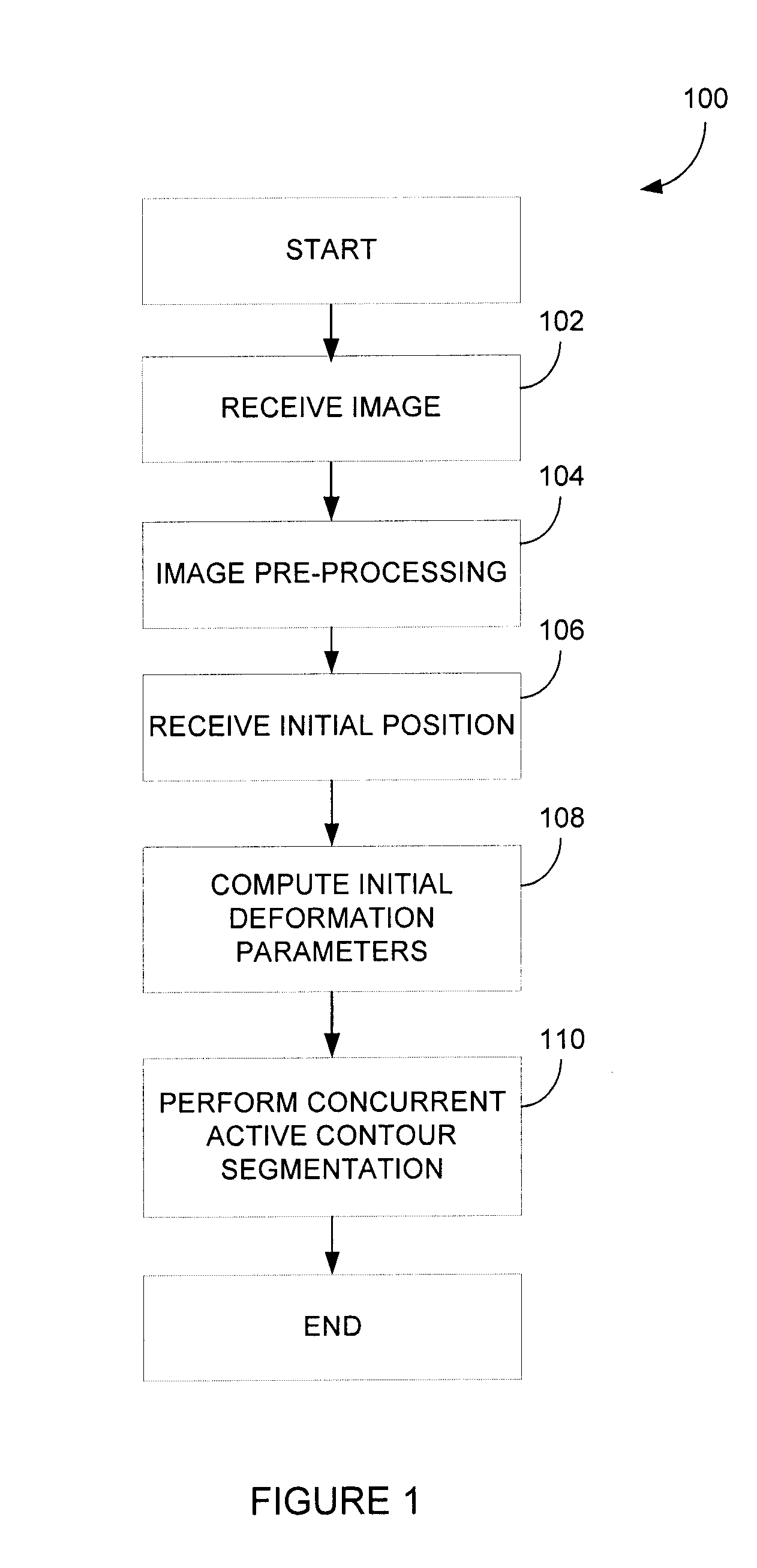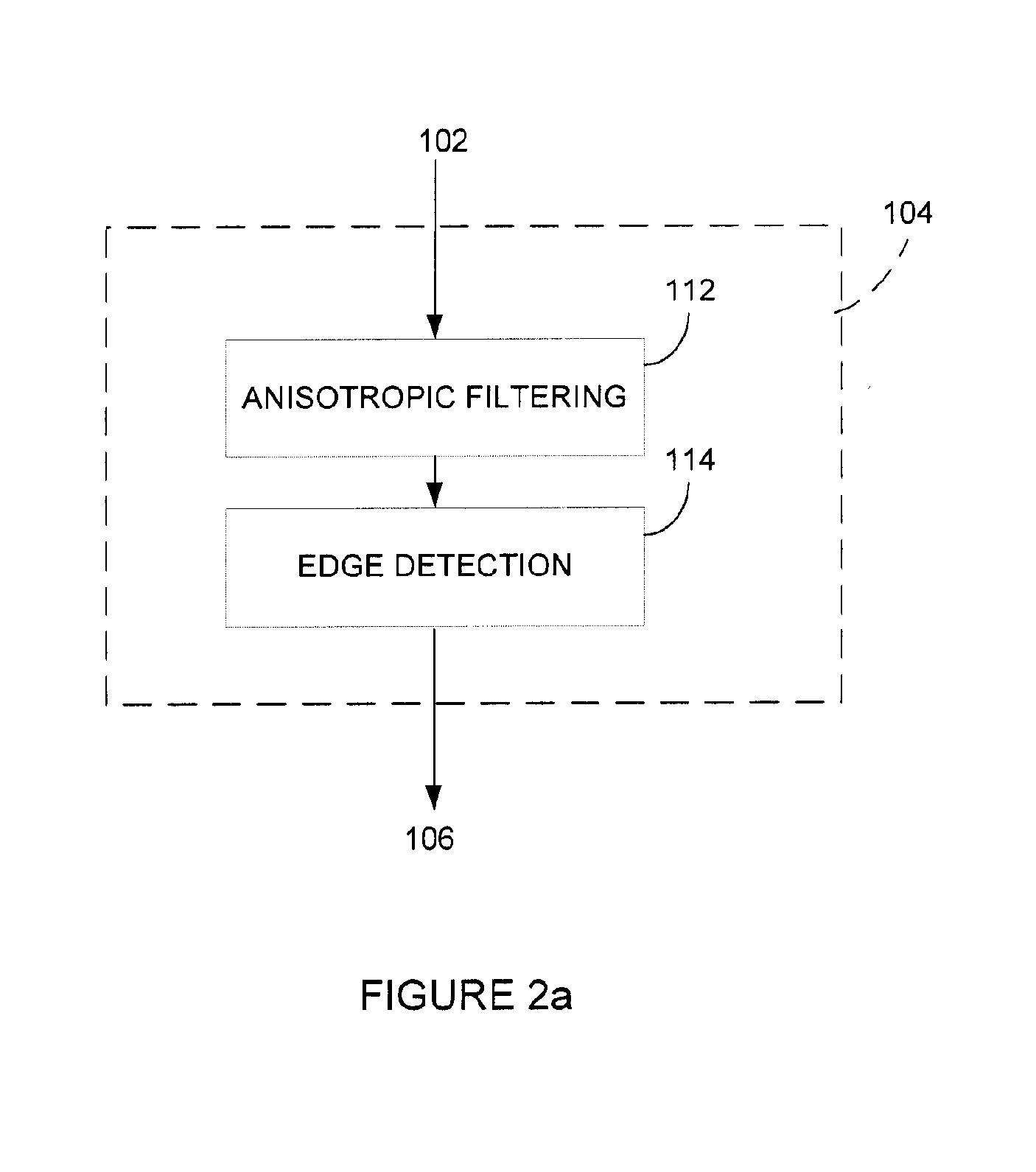Concurrent active contour segmentation
a technology of active contour and segmentation, applied in the field of image segmentation, can solve the problems of difficult segmentation, difficulty in segmenting cartilage of contiguous structures in images,
- Summary
- Abstract
- Description
- Claims
- Application Information
AI Technical Summary
Benefits of technology
Problems solved by technology
Method used
Image
Examples
Embodiment Construction
[0055]Referring to FIG. 1, a method 100 for performing concurrent active contour segmentation will now be described. The method 100 may be used to segment images in order to identify anatomical structures therein. The method 100 is suitable for identifying contiguous structures, such as cartilage, that may blend together in the image without a clear and distinct boundary and may therefore be difficult to distinguish. It should be understood that the method 100 may also apply to structures, which are not contiguous. The method 100 illustratively comprises the broad steps of receiving at step 102 an image, pre-processing at step 104 the received image, receiving at step 106 an initial position from which the concurrent active contour segmentation will be started, computing at step 108 initial deformation parameters, and performing at step 110 the concurrent active contour segmentation to identify the different structures in each image slice.
[0056]The image data received at step 102 is...
PUM
 Login to View More
Login to View More Abstract
Description
Claims
Application Information
 Login to View More
Login to View More - R&D
- Intellectual Property
- Life Sciences
- Materials
- Tech Scout
- Unparalleled Data Quality
- Higher Quality Content
- 60% Fewer Hallucinations
Browse by: Latest US Patents, China's latest patents, Technical Efficacy Thesaurus, Application Domain, Technology Topic, Popular Technical Reports.
© 2025 PatSnap. All rights reserved.Legal|Privacy policy|Modern Slavery Act Transparency Statement|Sitemap|About US| Contact US: help@patsnap.com



